Aerial service
See also Aerial victory standards of World War I
He then transferred to aerial service and was trained as a pilot. On 26 July 1917, he was granted Austrian Pilot's Certificate No. 734. In mid-August, he was posted to Fliegerkompanie 55J as a fighter pilot on the Italian Front in time for the Battle of Caporetto.
Flying his personal Albatros D.III with personal insignia of a prominent figure '8' on the fuselage, Lahner sent an Italian Nieuport down in flames on 18 November 1917. Nine days later, an Italian SAML two-seater fell flaming from his guns. On 16 December, he flamed another SAML; he had help from József Kiss and Julius Arigi.
Lahner won a dogfight with an Italian Nieuport on 25 January 1918, sending it down behind enemy lines. His fifth victory came on 21 March 1918, over an Italian Sovoia-Pomilio two-seater reconnaissance craft. However, in turn, he was swarmed by enemy fighters and driven down behind his own lines. He was slightly injured, and his bullet-riddled plane destroyed by artillery. While Lahner flew for the rest of the war, that was his last aerial success.
During the last months of the war, Lahner took on much of the squadron's administration, earning him the grateful nickname "Papa Franz". By war's end, he had earned two Silver Medals for Bravery First Class, as well as a Gold Medal for Bravery.
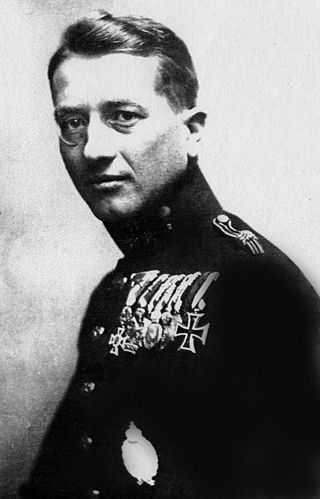
Godwin Karol Marian von Brumowsky was the most successful fighter ace of the Austro-Hungarian Air Force during World War I. He was officially credited with 35 air victories, with 8 others unconfirmed because they fell behind Allied lines. Just before the war ended, von Brumowski rose to command of all his country's fighter aviation fighting Italy on the Isonzo front.
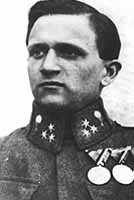
FeldwebelJulius Busa was an Austro-Hungarian World War I flying ace credited with five aerial victories during 1916. He was also notable for twice surviving direct hits by antiaircraft shells, saving his aircraft and aerial observer on both occasions. Busa scored all his aerial victories while engaged in general purpose missions in two-seater reconnaissance airplanes. His valor would be rewarded with Austria-Hungary's highest award for non-commissioned officers, the Gold Medal for Bravery. He also won three Silver Medals for Bravery—two First Class and one Second Class. Busa was killed in action by Francesco Baracca on 13 May 1917.
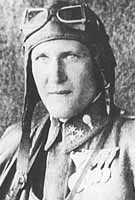
Julius Kowalczik was a Austro-Hungarian World War I flying ace credited with five aerial victories. Though he joined military service as the war began in 1914, he did not transfer to the Austro-Hungarian Aviation Troops until late 1915. Qualified as a fighter pilot in February 1916, he went into action in northern Italy the following month. He would score five aerial victories between 14 October 1916 and 29 June 1917. After surviving being shot down by Italian aces Antonio Amantea and Antonio Riva on 24 August 1917, Kowalczik was reassigned to instructor duty in January 1918. He survived the war, having won two Silver and two Gold Medals for Bravery.

Augustin Novák, sometimes referred to as Novak or Nowak was an Austro-Hungarian World War I flying ace credited with five or seven aerial victories. A prewar soldier, who had joined the horse artillery in 1911, he participated in the early Battle of Krasnik against the Russians, winning a Silver Medal for Bravery. After transferring to aviation service in January 1916, he became a two-seater pilot on the Russian, Romanian, and Italian Fronts. His aerial victories earned him two more awards of the Medal for Bravery, both First Class. He was then removed from combat to become an instructor in January 1918.

Lieutenant Alois Rodlauer (1897-1975) was a Austro-Hungarian World War I flying ace credited with five aerial victories. Originally a valorous infantry officer in 1915, 1916 and 1917, he turned to aviation in mid-1917. After pilot training, he managed to score five aerial victories between March and October 1918, despite two spells in hospital. Rodlauer returned to civilian life postwar, but returned to serve in the Luftwaffe from 1939 to 1945. He died a natural death in 1975. In 1983, aviation historians pieced together Rodlauer's combat record and realized he was an ace.
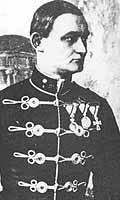
OberleutnantRudolf Szepessy-Sokoll Freiherr von Negyes et Reno was a Hungarian World War I flying ace credited with five aerial victories. He began his military career as a cavalryman as the war began in 1914. After winning the Silver Medal for Bravery and being promoted into the officers' ranks, he transferred to the Austro-Hungarian Aviation Troops in mid-1915 as an aerial observer. On 14 February 1916, while participating in a historic strategic bombing raid on Milan, he scored his first aerial victory. After shooting down another airplane and an observation balloon, Szepessy-Sokoll was transferred to a fighter unit after pilot training. After shooting down a pair of Macchi L.3s on 5 November 1917, he was killed in action the next day.

FeldwebelKarl Teichmann (1897–1927) was a Austro-Hungarian World War I flying ace credited with five aerial victories. His path to aerial victories began in 1915, when he joined the Austro-Hungarian infantry. His prewar training as an auto mechanic saw him assigned as an aviation mechanic on the Russian Front in February 1916. After eight months, he began pilot training, being awarded Austrian Pilot's Certificate 658 on 16 May 1917. Reassigned to the Italian Front, he scored five victories—three shared—between 26 September 1917 and 22 August 1918. Teichmann would survive the war and die of natural causes in Graz, Austria.

Karl Urban was an Austro-Hungarian World War I flying ace credited with five aerial victories.
Franz Wognar (1890-1943) was an Austrian-Hungarian World War I flying ace credited with five aerial victories. Wognar joined the Austro-Hungarian Armed Forces in 1913 as a trained mechanic. As the war broke out in 1914, he transferred to the Austro-Hungarian Aviation Troops. After pilot training, he was posted to fly two-seater reconnaissance aircraft over the early Battles of the Isonzo in northern Italy. Wognar flew reconnaissance, aerial photo, and artillery direction missions throughout 1916. Between 26 January and 16 September 1917, Wognar would score five victories. His fifth victory, over an Italian observation balloon, was extraordinary because very few pilots succeeded in balloon busting with a two-seater plane. Wognar was reassigned to test pilot duty. He ended the war with one Gold and four Silver awards of the Medal for Bravery.

FeldwebelAndreas Dombrowski was an Austro-Hungarian World War I flying ace credited with six aerial victories scored on three different fronts. He was conscripted into the Austro-Hungarian military in 1915. Dombrowski underwent pilot's training, gaining his license in June 1916. Posted to the Russian Front during the Brusilov Offensive to fly reconnaissance, he was credited with his first victory on 17 August 1916. In September, 1916 he was transferred to the Romanian Front. Still flying a reconnaissance aircraft, he fought four more successful engagements during 1917, becoming an ace. Transferred to the Italian Front in April 1918, he flew an Albatros D.III for his former observer, Karl Patzelt. On 4 May 1918, Dombrowski scored his sixth and final victory, then took a bullet to the face and crashlanded. Once healed, he went to a photographic reconnaissance unit for the rest of the war.

Johann Frint was an Austro-Hungarian flying ace during World War I and professional soldier credited with six aerial victories while flying as an aerial observer. Crippled as an infantry officer in November 1914, Frint volunteered for the Austro-Hungarian Aviation Troops. He scored his victories on the Italian Front from the rear seat of two-seater reconnaissance aircraft with a variety of pilots, including a triple victory while being flown by his commanding officer, Heinrich Kostrba. Rewarded with the Order of the Iron Crown and Military Merit Medal, Frint became a mediocre pilot. He was entrusted with successive commands of a number of squadrons before dying in an airplane crash in 1918.
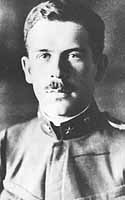
Oberleutnant Josef Pürer (1894-1918) was an Austro-Hungarian World War I flying ace credited with six aerial victories. A volunteer for the artillery when the war began, he fought for two years on the Russian Front. He was commissioned as an officer on 1 January 1916; later that year he transferred to the Austro-Hungarian Aviation Troops. He served as an aerial observer in northern Italy until early 1918. After scoring six aerial victories, he was trained as a fighter pilot by 11 July 1918. He was killed in action by Sidney Cottle on 31 August 1918.

OberleutnantOtto Jäger was an Austro-Hungarian World War I flying ace credited with seven aerial victories. He entered the war in 1914 as an infantry officer. By mid-1915, he had suffered three serious wounds fighting on the Russian Front, winning the Military Merit Medal, Silver Medal for Bravery, and the German War Service Medal. Invalided from front line service to training duties, Jäger trained as an aerial observer. Posted back to the Russian Front to fly with Fliegerkompanie 10 in early 1916, Jäger scored his fifth victory on 2 August 1916. He was awarded the Silver Military Merit Medal, the Military Merit Cross, and the German Iron Cross Second Class.
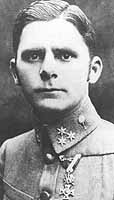
Hauptmann Josef von Maier was an Austro-Hungarian World War I flying ace credited with seven aerial victories. József Modory

StabsfeldwebelJohann Risztics (1895-1973) was an Austro-Hungarian World War I flying ace credited with seven reliably confirmed aerial victories. After his wounding early in World War I, he switched to aviation duty as a mechanic. He went for pilot training in 1915. Once trained, he shot down seven enemy fighter planes, winning five Medals for Bravery in the process. Postwar, he became a record-setting test pilot for Junkers.

OberleutnantAlexander Tahy was a Hungarian World War I flying ace credited with eight aerial victories while serving with the Austro-Hungarian Aviation Troops. He began the war as an artilleryman, winning the Silver Medal for Bravery in May 1915. In early 1916, he transferred to aviation duty as an aerial observer. Between 3 December 1916 and 26 June 1917, he was credited with five aerial victories for Fliegerkompanie 19, earning another three decorations. Having taught himself to fly, he transferred to a fighter unit, Fliegerkompanie 51J for his last three victories. On 7 March 1918, Tahy died in a flying accident. His greatest honor came after his death, when he was awarded the Knight's Cross of the Order of Leopold with War Decorations and Swords.

Kurt Gruber was an Austro-Hungarian flying ace during the First World War who held the rank of Offiziersstellvertreter. He was credited with eleven aerial victories, 5 shared with other pilots.
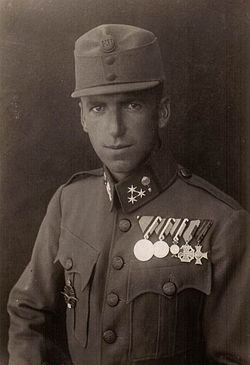
Feldwebel Stefan Fejes was an Austro-Hungarian flying ace credited with 16 confirmed and 4 unconfirmed aerial victories during World War I. By war's end, he had not only received numerous decorations, he had been personally promoted by his emperor.
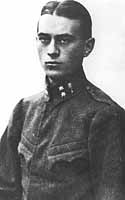
Stabsfeldwebel Ferdinand Udvardy was a Hungarian conscript into the military of the Austro-Hungarian Empire who became a flying ace credited with nine aerial victories. Upon the dissolution of Austria-Hungary, Udvardy became a Hungarian citizen, and in the aftermath of World War I, defended his new nation against invasion.

Oberleutnant Georg Kenzian Edler von Kenzianshausen followed his father's profession of arms, and served the Austro-Hungarian Empire during World War I. He became a fighter ace, scoring eight aerial victories. After the dissolution of Austria-Hungary in the aftermath of World War I, he became a citizen of German Austria and defended his new nation against invasion.



















